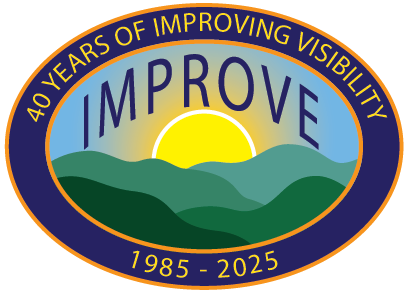Measurement of Haze and Visual Effects (MOHAVE)


Background
Project MOHAVE was an extensive monitoring, modeling, and data assessment project designed to estimate the contributions of the Mohave Power Plant (MPP) to haze at the Grand Canyon National Park (GCNP). The field study component of the project was conducted in 1992 and contained two intensive monitoring periods (~30 days in the winter and ~50 days in the summer). Unique, non-depositing, non-reactive perfluorocarbon tracer (PFT) materials were continuously released from the MPP stack during the two intensive periods to enable the tracking of emissions specifically from MPP. Tracer, ambient particulate composition, and SO2 concentrations were measured at about 30 locations in a four-state region. Two of these monitoring sites, Hopi Point (HOPO) near the main visitor center at the south rim of the canyon and Meadview (MEAD) near the far western end of the national park were used as key receptor sites representative of GCNP.
Project MOHAVE operated under the joint technical and program management of the Environmental Protection Agency (EPA) and Southern California Edison (SCE) in close partnership with the National Park Service (NPS). Numerous other organizations contributed to the operations and assessment work of the project. Since the end of the field study component of the project, data assessment and modeling efforts were undertaken by the many participants and have led to numerous papers and reports. By design these efforts have been the products of their respective authors and have not been endorsed as findings of Project MOHAVE.
The primary goal of Project MOHAVE was to determine the contribution of the MPP emissions to haze at GCNP and other nearby mandatory Class I areas where visibility is an important air quality related value. Secondary goals included an increased knowledge of the contributions of other sources to haze in GCNP and the southwestern United States in general. The specific objectives to accomplish these goals were:
- Evaluate the measurements for applicability to modeling and data analysis activities.
- Describe the visibility, air quality and meteorology during the field study period and to determine the degree to which these measurements represent typical visibility events at the Grand Canyon.
- Further develop conceptual models of physical and chemical processes which affect visibility impairment at the Grand Canyon.
- Estimate the contributions from different emissions sources to visibility impairment at the Grand Canyon, and quantitatively evaluate the uncertainties of those estimates.
- Reconcile different scientific interpretations of the same data and present this reconciliation to policy-makers.
The process of identifying and quantifying the impact of MPP’s emissions on Grand Canyon visibility was accomplished using both receptor oriented and source oriented models. These two assessment methodologies made extensive use of the measured air quality and meteorological data. The study results showed that the Mohave Generating Station is not the major cause of visibility impairment in the Canyon. Air pollution from other areas, including Southern California, is also transported to the Grand Canyonand has an impact on visibility in the Park. However, evidence did exist that the MPP contributes to visibility impairment at the Grand Canyon. Based upon this and the fact that the MPP is likely the single largest contributor to the GCNP haze, due to the quantity of SO2 emitted from the MPP and its proximity to the Grand Canyon, EPA issued a proposed rule to revise the federal implementation plan for visibility protection in the State of Nevada to include emission reduction requirements for the Mohave Generating Station.
Reports

